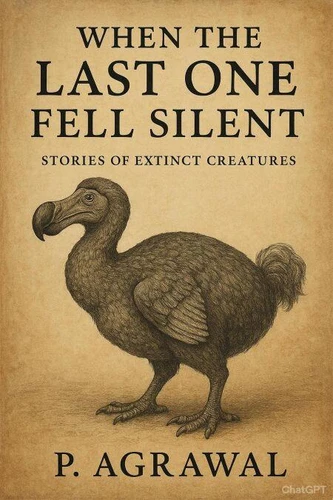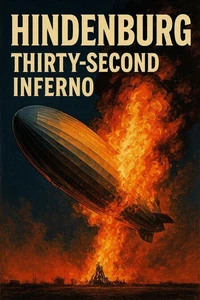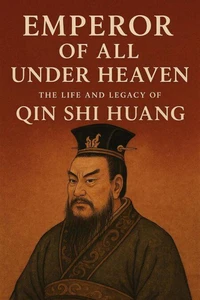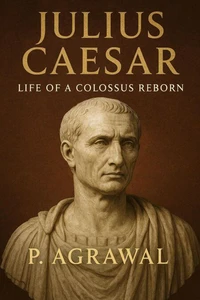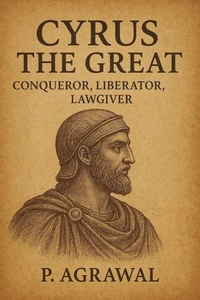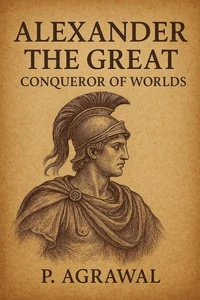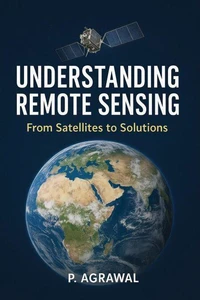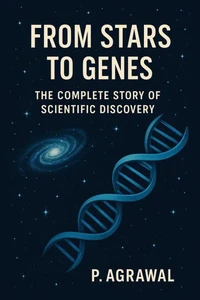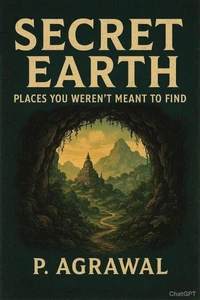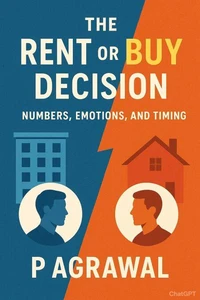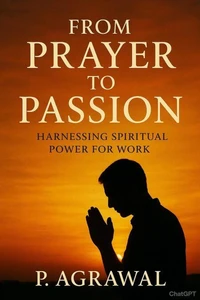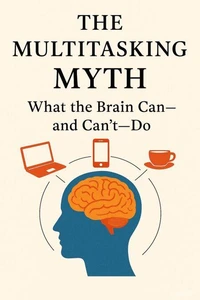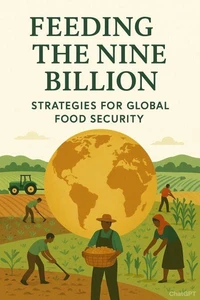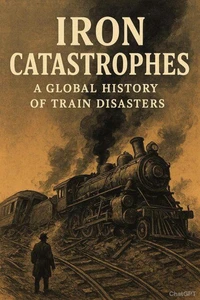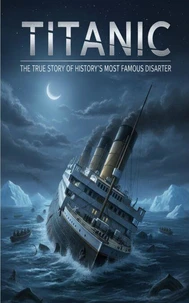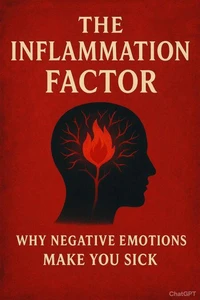Nouveauté
When the Last One Fell Silent: Stories of Extinct Creatures
Par :Formats :
Disponible dans votre compte client Decitre ou Furet du Nord dès validation de votre commande. Le format ePub est :
- Compatible avec une lecture sur My Vivlio (smartphone, tablette, ordinateur)
- Compatible avec une lecture sur liseuses Vivlio
- Pour les liseuses autres que Vivlio, vous devez utiliser le logiciel Adobe Digital Edition. Non compatible avec la lecture sur les liseuses Kindle, Remarkable et Sony
 , qui est-ce ?
, qui est-ce ?Notre partenaire de plateforme de lecture numérique où vous retrouverez l'ensemble de vos ebooks gratuitement
Pour en savoir plus sur nos ebooks, consultez notre aide en ligne ici
- FormatePub
- ISBN8232823290
- EAN9798232823290
- Date de parution01/10/2025
- Protection num.pas de protection
- Infos supplémentairesepub
- ÉditeurHamza elmir
Résumé
When the Last One Fell Silent: Stories of Extinct Creatures is a haunting yet deeply human exploration of extinction-told not as dry statistics, but as a series of vivid portraits that bring lost creatures back to life through story, imagery, and reflection. From the island forests where dodos once waddled without fear, to the endless skies once blackened by passenger pigeons, to the misty rainforests where golden toads shimmered like jewels, each chapter of this book immerses readers in the world as it once was-and as it might never be again.
Extinction is as old as life itself, but in the last few centuries its rhythm has changed. Where once climate, asteroids, and ice shaped life and loss, today extinction bears the clear mark of one species-our own. This book moves tenderly through history, telling the stories of animals we have lost: the thylacine of Tasmania, hunted more by rumor than truth; the great auk and Steller's sea cow, slaughtered out of utility and curiosity; the Pyrenean ibex, which briefly flickered back into life through cloning before disappearing again; the mammoths, whose heavy footfalls once trembled across frozen steppes; and the baiji dolphin, the gentle goddess of the Yangtze, drowned beneath the noise of factories and boats.
Each chapter does more than recount the facts of extinction. It lingers on the silences that follow. Silence of forests once filled with birds. Silence of oceans where seals no longer bark. Silence of mountains where goats no longer leap. Readers are invited not only to see the loss but to feel it-the grief of the final call, the heaviness of absence, the weight of knowing that these lives were here, and now they are not.
At the same time, When the Last One Fell Silent is not simply an elegy. It is also a mirror and a warning. Chapters on myths and legends show how humans carry the memory of vanished animals in stories of dragons, thunder birds, and mermaids. Reflections on the "Role of Humans" and the "Next Ones at Risk" remind us that extinction is not finished; it continues today with elephants, tigers, frogs, bees, and coral reefs.
Yet within these reminders lies hope. The book highlights the resilience of life when given protection and space-eagles soaring again, whales singing louder after centuries of persecution, and fragile birds rebounding from the edge. Written in a style that blends natural history, storytelling, and quiet philosophy, this book is as much about humanity as it is about the vanished creatures themselves.
It asks what it means to mourn, to remember, to retell. It questions what kind of ancestors we will be, and what legacy we will leave behind. For readers who care about life and its fragile beauty, When the Last One Fell Silent is both a journey into the past and a call to action for the future. It reminds us that silence is not inevitable-unless we allow it. The chorus of Earth still plays today; whether it continues is a choice we must make together.
Extinction is as old as life itself, but in the last few centuries its rhythm has changed. Where once climate, asteroids, and ice shaped life and loss, today extinction bears the clear mark of one species-our own. This book moves tenderly through history, telling the stories of animals we have lost: the thylacine of Tasmania, hunted more by rumor than truth; the great auk and Steller's sea cow, slaughtered out of utility and curiosity; the Pyrenean ibex, which briefly flickered back into life through cloning before disappearing again; the mammoths, whose heavy footfalls once trembled across frozen steppes; and the baiji dolphin, the gentle goddess of the Yangtze, drowned beneath the noise of factories and boats.
Each chapter does more than recount the facts of extinction. It lingers on the silences that follow. Silence of forests once filled with birds. Silence of oceans where seals no longer bark. Silence of mountains where goats no longer leap. Readers are invited not only to see the loss but to feel it-the grief of the final call, the heaviness of absence, the weight of knowing that these lives were here, and now they are not.
At the same time, When the Last One Fell Silent is not simply an elegy. It is also a mirror and a warning. Chapters on myths and legends show how humans carry the memory of vanished animals in stories of dragons, thunder birds, and mermaids. Reflections on the "Role of Humans" and the "Next Ones at Risk" remind us that extinction is not finished; it continues today with elephants, tigers, frogs, bees, and coral reefs.
Yet within these reminders lies hope. The book highlights the resilience of life when given protection and space-eagles soaring again, whales singing louder after centuries of persecution, and fragile birds rebounding from the edge. Written in a style that blends natural history, storytelling, and quiet philosophy, this book is as much about humanity as it is about the vanished creatures themselves.
It asks what it means to mourn, to remember, to retell. It questions what kind of ancestors we will be, and what legacy we will leave behind. For readers who care about life and its fragile beauty, When the Last One Fell Silent is both a journey into the past and a call to action for the future. It reminds us that silence is not inevitable-unless we allow it. The chorus of Earth still plays today; whether it continues is a choice we must make together.
When the Last One Fell Silent: Stories of Extinct Creatures is a haunting yet deeply human exploration of extinction-told not as dry statistics, but as a series of vivid portraits that bring lost creatures back to life through story, imagery, and reflection. From the island forests where dodos once waddled without fear, to the endless skies once blackened by passenger pigeons, to the misty rainforests where golden toads shimmered like jewels, each chapter of this book immerses readers in the world as it once was-and as it might never be again.
Extinction is as old as life itself, but in the last few centuries its rhythm has changed. Where once climate, asteroids, and ice shaped life and loss, today extinction bears the clear mark of one species-our own. This book moves tenderly through history, telling the stories of animals we have lost: the thylacine of Tasmania, hunted more by rumor than truth; the great auk and Steller's sea cow, slaughtered out of utility and curiosity; the Pyrenean ibex, which briefly flickered back into life through cloning before disappearing again; the mammoths, whose heavy footfalls once trembled across frozen steppes; and the baiji dolphin, the gentle goddess of the Yangtze, drowned beneath the noise of factories and boats.
Each chapter does more than recount the facts of extinction. It lingers on the silences that follow. Silence of forests once filled with birds. Silence of oceans where seals no longer bark. Silence of mountains where goats no longer leap. Readers are invited not only to see the loss but to feel it-the grief of the final call, the heaviness of absence, the weight of knowing that these lives were here, and now they are not.
At the same time, When the Last One Fell Silent is not simply an elegy. It is also a mirror and a warning. Chapters on myths and legends show how humans carry the memory of vanished animals in stories of dragons, thunder birds, and mermaids. Reflections on the "Role of Humans" and the "Next Ones at Risk" remind us that extinction is not finished; it continues today with elephants, tigers, frogs, bees, and coral reefs.
Yet within these reminders lies hope. The book highlights the resilience of life when given protection and space-eagles soaring again, whales singing louder after centuries of persecution, and fragile birds rebounding from the edge. Written in a style that blends natural history, storytelling, and quiet philosophy, this book is as much about humanity as it is about the vanished creatures themselves.
It asks what it means to mourn, to remember, to retell. It questions what kind of ancestors we will be, and what legacy we will leave behind. For readers who care about life and its fragile beauty, When the Last One Fell Silent is both a journey into the past and a call to action for the future. It reminds us that silence is not inevitable-unless we allow it. The chorus of Earth still plays today; whether it continues is a choice we must make together.
Extinction is as old as life itself, but in the last few centuries its rhythm has changed. Where once climate, asteroids, and ice shaped life and loss, today extinction bears the clear mark of one species-our own. This book moves tenderly through history, telling the stories of animals we have lost: the thylacine of Tasmania, hunted more by rumor than truth; the great auk and Steller's sea cow, slaughtered out of utility and curiosity; the Pyrenean ibex, which briefly flickered back into life through cloning before disappearing again; the mammoths, whose heavy footfalls once trembled across frozen steppes; and the baiji dolphin, the gentle goddess of the Yangtze, drowned beneath the noise of factories and boats.
Each chapter does more than recount the facts of extinction. It lingers on the silences that follow. Silence of forests once filled with birds. Silence of oceans where seals no longer bark. Silence of mountains where goats no longer leap. Readers are invited not only to see the loss but to feel it-the grief of the final call, the heaviness of absence, the weight of knowing that these lives were here, and now they are not.
At the same time, When the Last One Fell Silent is not simply an elegy. It is also a mirror and a warning. Chapters on myths and legends show how humans carry the memory of vanished animals in stories of dragons, thunder birds, and mermaids. Reflections on the "Role of Humans" and the "Next Ones at Risk" remind us that extinction is not finished; it continues today with elephants, tigers, frogs, bees, and coral reefs.
Yet within these reminders lies hope. The book highlights the resilience of life when given protection and space-eagles soaring again, whales singing louder after centuries of persecution, and fragile birds rebounding from the edge. Written in a style that blends natural history, storytelling, and quiet philosophy, this book is as much about humanity as it is about the vanished creatures themselves.
It asks what it means to mourn, to remember, to retell. It questions what kind of ancestors we will be, and what legacy we will leave behind. For readers who care about life and its fragile beauty, When the Last One Fell Silent is both a journey into the past and a call to action for the future. It reminds us that silence is not inevitable-unless we allow it. The chorus of Earth still plays today; whether it continues is a choice we must make together.

